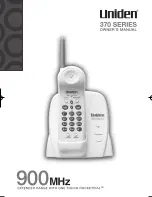
SIP SIP-Phone Administration Guide
6
according to phone book data from 1-10 (please refer to LCD configuration-
3.Phone
Book
; Advanced Configurations via Telnet-
10.[pbook] command
, or Web
Configuration-Phone Book chapter.
Number 1 –10, * and #
: The function is the same as the general phone set.
Corresponding list of keypad and symbol:
(1) Character mode:
1
“1”
2
“A” ; “ B” ; “C” ; “2”
3
“D” ; “E” ; “F” ; “3”
4
“G” ; “H” ; “I” ; “4”
5
“J” ; “K” ; “L” ; “5”
6
“M” ; “N” ; “O” ; “6”
7
“P” ; “Q” ; “R” ; “S” ; “7”
8
“T” ; “U” ; “V” ; “8”
9
“W” ; “X” ; “Y” ; “Z” ; “9”
*
“.” ; “@” ; “_” ; ”-“ ; “,” ; “!” ; “?” ; “*” ; “’” ; “+” ; “$” ; “*”
0
“Space” ; “0”
#
“#”
(2) Digit mode:
1
“1”
2
“2”
3
“3”
4
“4”
5
“5”
6
“6”
7
“7”
8
“8”
9
“9”
*
“.”
0
“0”
#
MUTE
: Mute the voice of MIC and let others can’t hear from user in communication.
PSTN
: Press PSTN to switch SIP-Phone as PSTN or IP Phone Mode. In PSTN mode,
“PSTN” characters will be displayed on LCD left bottom side, then users can dial out as








































